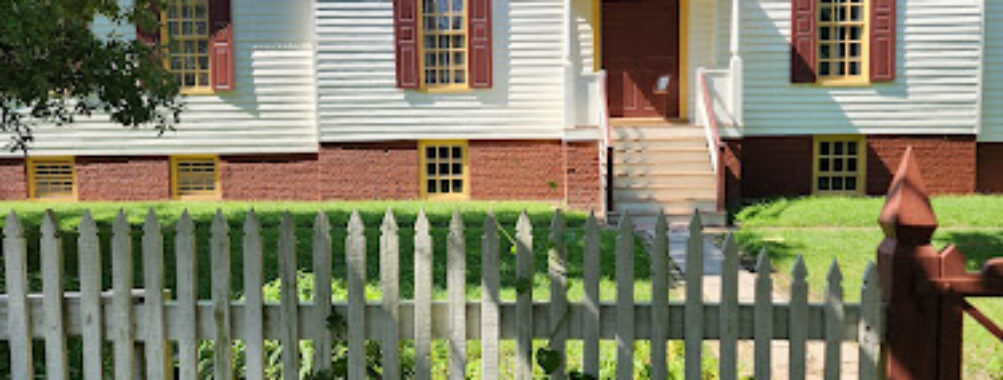
St. George Tucker House
“`html
Table of Contents
Description
The St. George Tucker House is one of those places in Williamsburg that feels like a quiet conversation between the past and the present. Built at the turn of the 18th century and later expanded by St. George Tucker himself, a Bermudian-born lawyer and professor at the College of William & Mary, the home is layered with stories of early American life. Tucker was more than just a homeowner—he was a Revolutionary War militia officer, a legal scholar, and eventually a judge who left a lasting mark on Virginia’s legal system. Walking through the house today, you’re not just looking at walls and windows; you’re stepping into a space where law, politics, and family life intersected in fascinating ways.
The house stands out because it’s not overly polished. It still carries that lived-in feeling, which makes it easier to imagine what life might have been like for the Tucker family. You’ll notice the Georgian architecture, the symmetry, the craftsmanship—it’s elegant without being overwhelming. And there’s a certain charm in knowing that parts of the house were moved and rebuilt here in the 1780s, a kind of architectural puzzle pieced together by Tucker himself. It’s not perfect, but that’s part of its appeal.
Visitors often remark on the warmth of the volunteers who help bring the place to life. They’re not just guides rattling off facts; they’re storytellers, weaving in anecdotes about Tucker’s family, his writings, and even his push to end slavery in Virginia long before it was a popular idea. The house has its quirks, sure, but those quirks are what make it memorable. Most people leave with a sense of admiration, though a few might wish for more interactive exhibits or modern displays. Still, if you’re the kind of traveler who enjoys authenticity over flash, this house will likely strike the right chord.
Key Features
- Original colonial home dating back to 1718–1719, later expanded by St. George Tucker between 1788–1798
- Georgian architectural style with classic symmetry and carefully preserved details
- Historic ties to William Levingston, who built America’s first theater on the property
- Strong connections to law and politics through Tucker’s career as a professor, judge, and reformer
- Wheelchair accessible entrance and parking lot for ease of access
- Knowledgeable volunteers who share personal stories and historical insights
- Quiet, less crowded atmosphere compared to other Williamsburg attractions
Best Time to Visit
Spring and fall are the sweet spots for visiting the St. George Tucker House. The weather is mild, the gardens are at their best, and the whole area of Colonial Williamsburg feels alive without being overrun. Personally, I think autumn has the edge—there’s something about crisp air and golden leaves that makes wandering around old houses feel even more magical. Summer can be hot and humid, so if you go then, bring water and plan for breaks in the shade. Winter has its own charm with fewer crowds, but you’ll want to bundle up.
If you’re someone who likes a quieter experience, aim for weekday mornings. That’s when you’ll have more space to explore and ask questions without feeling rushed. And if you’re planning to see multiple sites in Colonial Williamsburg, pairing the Tucker House with nearby attractions on the same day makes for a smoother experience.
How to Get There
Reaching the St. George Tucker House is straightforward if you’re already in Williamsburg. It’s located right in the Historic Area, within easy walking distance of other major landmarks. If you’re driving, there’s accessible parking nearby, which is a relief if you’ve ever tried navigating crowded historic districts. For those staying in Colonial Williamsburg hotels, you can often just stroll over—it’s part of what makes the area so enjoyable, the fact that so many sites are clustered together.
Public transportation options are limited, so having a car or staying nearby is your best bet. Once you’re in the Historic Area, though, walking is the way to go. The streets are pedestrian-friendly, and you’ll pass plenty of other interesting spots along the way.
Tips for Visiting
First off, consider getting your tickets in advance. It saves time and gives you peace of mind, especially during busier seasons. The Tucker House isn’t the kind of place where you’ll find long lines around the block, but planning ahead never hurts.
Wear comfortable shoes. I know, everyone says that about historic towns, but I’ve made the mistake of wearing fancy shoes in Williamsburg before, and let me tell you—those cobblestones don’t forgive. Also, give yourself time to linger. This isn’t a house you rush through in ten minutes. The details, the stories from the volunteers, even just sitting outside for a moment—it all adds to the experience.
If you’re traveling with kids, manage expectations. Some children will love the history, others might find it a little slow compared to more interactive attractions. In that case, combine it with a more hands-on site nearby to balance the day. And don’t forget to ask questions—the volunteers are a treasure trove of knowledge, and they’ll often share tidbits you won’t find in guidebooks.
Lastly, bring a curious mindset. The St. George Tucker House isn’t flashy, but it’s rich in substance. It’s one of those places where the more you lean in, the more rewarding it becomes. You’ll leave not just with photos, but with a deeper appreciation for the people who shaped early America.
“`
Location
Places to Stay Near St. George Tucker House
Find and Book a Tour
Explore More Travel Guides
No reviews found! Be the first to review!